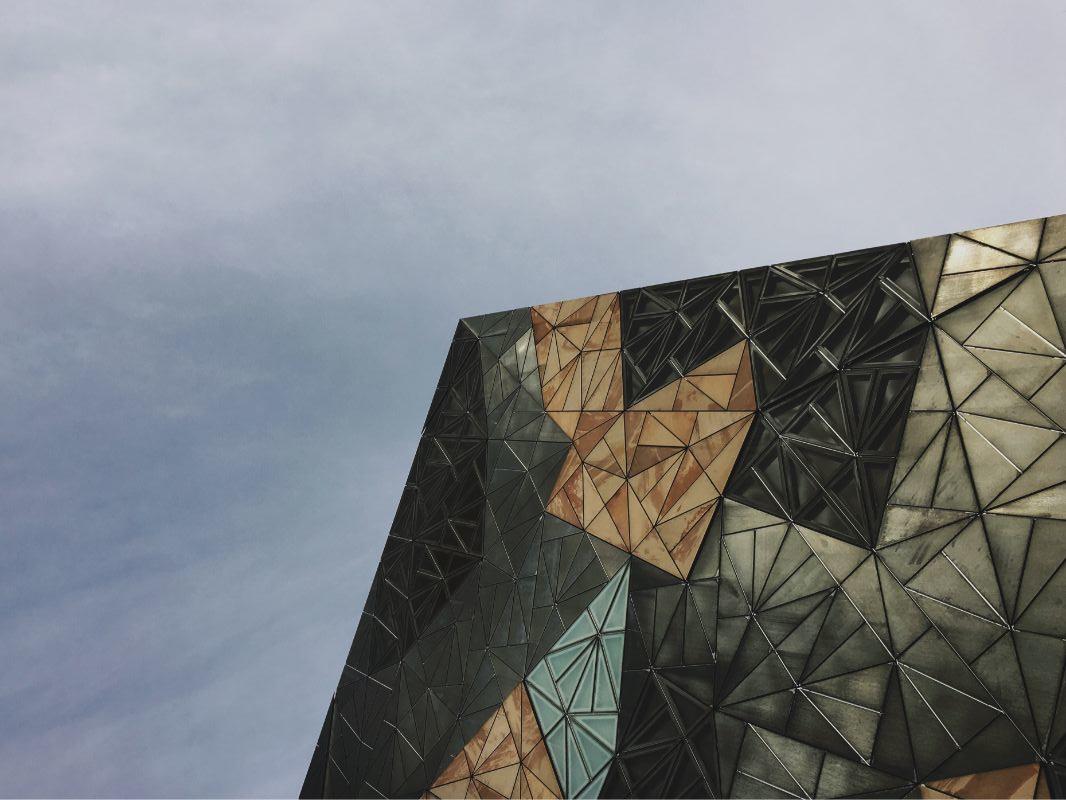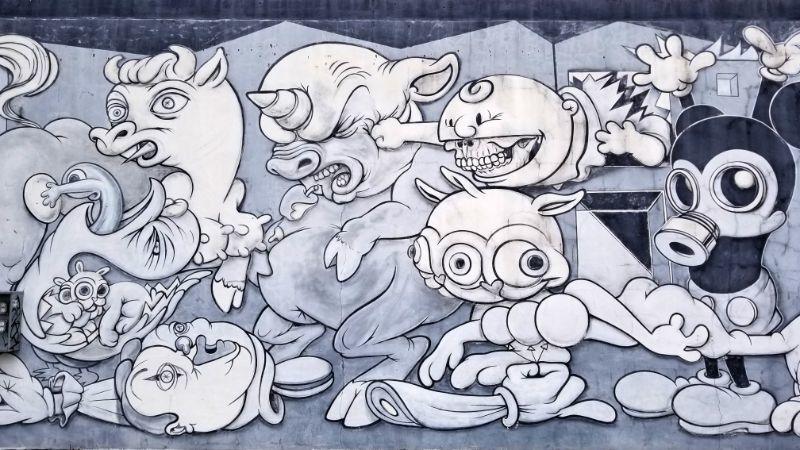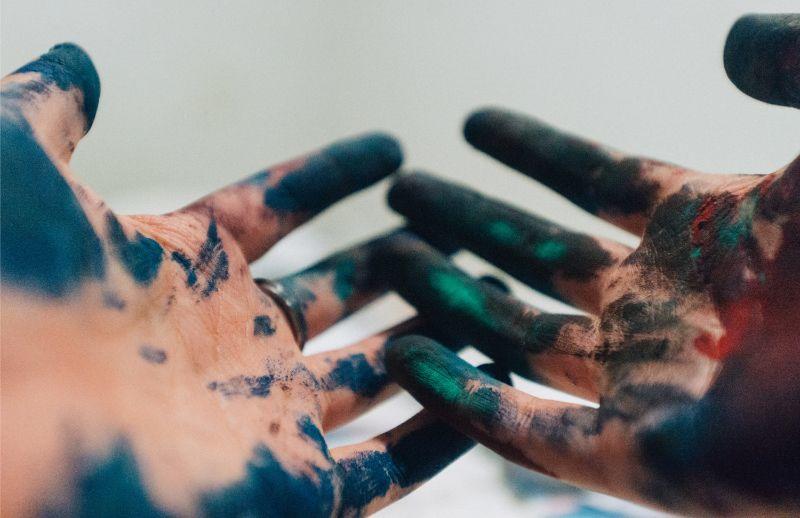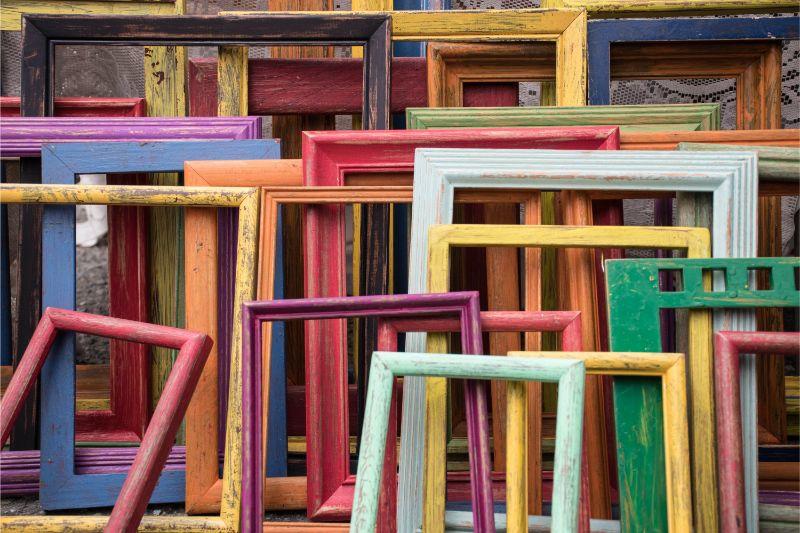Cubist artists focused on paving ways for displaying three-dimensional art forms by expressing more than one viewpoint on the same canvas. These artists were displeased by the way that space and perception was presented in the painting of the past, so they created a new way to display form through their painting. For Cubist Artists, mixed media was the order of the day and they tended to focus on the interplay between lighter and darker shadows in their artworks.
The name Cubism was given to the movement started by enthusiastic Cubist artists as most of the art forms the artists created resembled small cubes joining together. Inevitably, an easy way to tell that you are looking at a painting by a Cubist artist is to look for painting that is a reflection of many cubes. The Cubism Art movement gained its prominence in the 20th century and one of the more dominant Cubist Artists was Pablo Picasso.
Both Picasso as well as Cubist artist Georges Braque worked hand in hand to bring the Cubism movement to life. While Picasso set the scene for Cubism to develop, he refused to be labelled a Cubist artist, but rather, he wanted to be seen as more of an experimental artist.
Cubist artists like Picaso and Braque drew inspiration from other art movements but expressed very stiff control as depicted in many of the paintings by Picaso himself.
Do you want to become an art critic?
Well, surely you can review and comment on the work of talented artists if you work towards this goal by studying art. If you need further assistance with regard to understanding the features of art, reach out to one of our South African visual art tutors. A private art tutor could also help you distinguish between expressionism and impressionism.

Facts About the Cubism Movement
It is quite therapeutic to look at paintings painted by Cubist artists. As a form of counseling therapy, many counselors' resort to using art therapy as well. Are you keen about learning more on this form of therapy? If so reach out to one of our Superprof counsellors offering art therapy.
To understand this Cubism Art movement more, there are a few core facts that you need to note about Cubism in general:
- The founder of Cubism was Pablo Picasso who developed a unique art style with another artist called Georges Braque.
- It was also the work of artists such as Paul Cezanne that could be seen at the beginning of the Cubism era. Cezanne was one such artist that painted objects from an entirely different viewpoint.
- The Cubism Movement featured paintings that debated the idea of perspective, depth, and space.
- The movement didn't allow for realistic reproductions, however, the movement focused on the experimentation with figures and objects so that the idea of space flowing through the objects became evident. It was Picasso who derived inspiration from African Tribal Masks for the paintings that he created.
- Analytic Cubism was seen as the primary phase of cubism that began in 1909 until 1912. Analytic Cubism fixated on producing art that reproduced geometric forms from the subject.
- Synthetic cubism is the secondary phase of Cubism that started in 1912 until 1920. Synthetic cubism showcased simple shapes that created a flattened depth of field which built nicely into each other.
- The Cubism Movement was inevitable created to dispel archaic ideas about art. Ultimately, Cubism created a new vision of what art could be.
If you would like to understand the Cubism movement more, you need to reach out to an art tutor of your choosing who will help you to understand all you need to know about Cubism and other artistic movements as well.

Understanding What Cubism Is by Exploring Details About the Artists of the Cubism Movement
Picasso
Pablo Picasso was of Spanish origin and learnt how to paint from his father who saw Pablo's artistic potential immediately. Picasso attended the best art schools. To perfect his craft as an artist, he visited many museums all around the world.
Picasso's painting periods went from a blue period where he mainly painted using blue and shades of grey in his palette to a rose period whereby reds and pinks were the chosen colours for his palette. Once his colour palette darkened, he moved towards Cubism.
When Picasso moved towards the Cubism movement, he started mentioning things like, "A head is a matter of eyes, nose, mouth which can be distributed in any way that you like."
His statement of distributing features in any way that you like was seen in all of his paintings from when he started the Cubism Movement. He did, in fact, draw inspiration from African Tribal masks and remains the key advocate for this movement to date.
Birthplace: Malaga, Spain
Lifeline: 1881 - 1973
Art Style: Cubism, Symbolism, Surrealism
Art Forms: Painter, printmaker and sculptor
Picasso produced work in both the cubist and surrealist art styles.
Brague
"In art there is only one thing that counts: the bit that cannot be explained." Georges Brague
Georges Brague was a French painter who was also born in a rather creative family. His father was a decorative painter who played a role in encouraging Georges from the onset. Georges started painting in a typically Fauvist style using bold colours. However, once he saw Pablo Picasso's work, he took a liking to it. He befriended Picasso and together they brought this Cubism Movement to the fore.
Birthplace: France
Lifeline: 1882 - 1963
Art Style: Fauvism, Cubism
Art Forms: Painter, printmaker and sculptor

Cubist Artwork to Consider
Guernica
Guernica is a huge oil painting created by the famous Cubist artist, Pablo Picaso. The painting is a grey, black, and white painting that displays suffering that is characterised by full on violence and chaos.
In fact, Guernica is a painting that does tell the story about the Spanish Civil War. Back in 1937, the Spanish nationalist government had the Nazis bomb a small town called Guernica in Northern Spain. The town was believed to be the center of the Republican Resistance Movement.
A deeper look at Guernica shows what you need to pay attention to.
Exploring Guernica in Detail:
From The Left to Right
- The stunned bull - Symbolises the continued brutality and darkness.
- The woman holding a dead child - Represents the virgin and child as they were affected by the war
- The light bulb - The light bulb shaped like an eye and has various meanings; God's eye as he looks down on what has happened, The Spanish word for the light bulb (bombilla) and bomb (bomba) are very similar and establishes the idea that the lightbulb in the painting hovers above the painting like a falling bomb.
- The war horse - is a fallen horse which is created by many images, one image which is that of a human skull.
Artist: Picasso
Date Painted: 1937
Size: 350cm x 780cm
Medium: Oil on canvas
Paintings by Cubist Artists
To get an idea of what type of paintings were produced during the Cubist Movement, we need to look at various artists' work that aligned with this movement well.
- Les Demoiselles d'Avignon By Pablo Picasso
- Mandora by Georges Braque
- House at L’Estaque by Georges Braque
- Danseuse au Cafe by Jean Metzinger
- Portrait of Pablo Picasso by Juan Gris
- Bottle of Vieux Marc, Glass, Guitar and Newspaper by Pablo Picaso

As an art movement that gained its wings by originating in the early 20th century in Europe, it surely did expand to include other artists like Robert Delaunay who also focused on analysing the subject matter of the painting more deeply. The play on different perspectives and the use of techniques like light shadows versus dark shadows made this art form all the more attractive.
It was the Cubism Art movement that gave birth to other art movements like that of Purism. Later artists did not only focus on the subject matter of paintings like the Cubist artists did, but also focused entirely on intertwining the subject with the context. Paintings that intermeshed the past and the present became a prevalent feature of the Avante Garde abstract painting eras that followed.
It is interesting not only to focus on one particular art movement when you begin to take an interest in art. You need to know your art movements and which painters' works can be characterised according to which art movement. Did you know that Dali is a surrealist painter?
Perhaps you may have even heard the name Andy Warhol and linked it to the artist who painted the icon Campbell's Soup Cans. Well, this painter was a pop artist.
Take an interest in art movements and painters before you dip your paintbrush in some paint. Remember: "Art is a form of love. Art is the ultimate gift. Art heals life." Robert Genn















